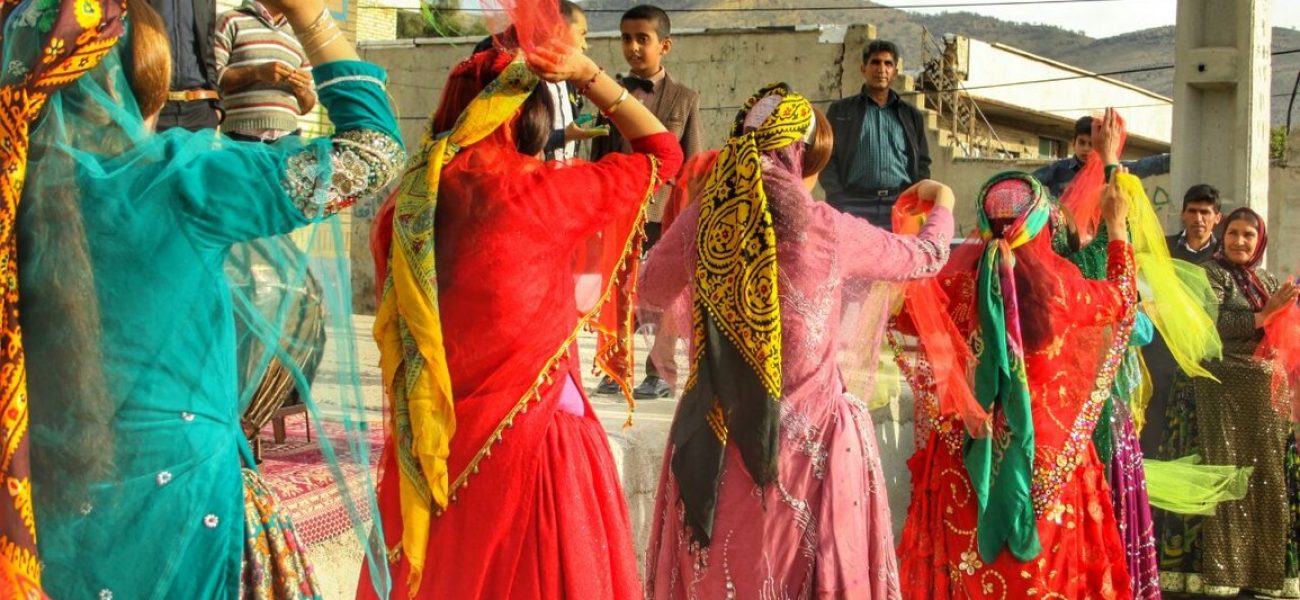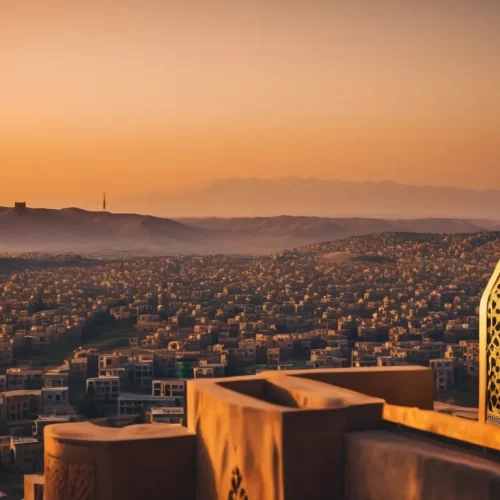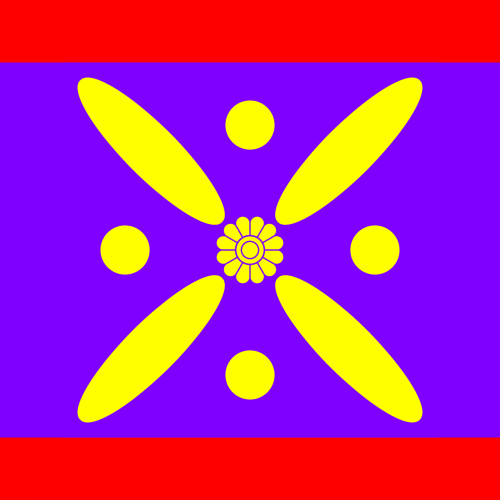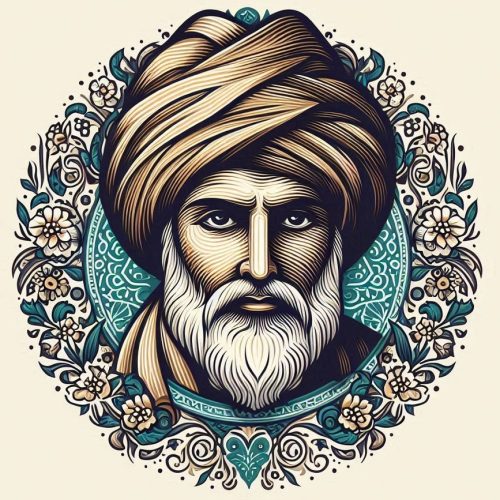Nestled in the rugged landscapes of western Iran, the Lurs stand as a testament to the diversity and richness of Iranian heritage. Comprising four distinct branches – the Bakhtiari, Mamasani, Kohgiluyeh, and Lur proper – the Lurs are bound together by a shared language and cultural heritage that has evolved over millennia. In this research article, we delve into the multifaceted history, culture, religion, language, and identity of the Lur people, shedding light on their unique contributions to the tapestry of Iranian civilization.
History: Tracing the Footsteps of the Lurs
The history of the Lurs is a tapestry woven with threads of ancient civilizations, migrations, and cultural exchanges that have shaped their identity over millennia. Tracing the footsteps of the Lurs leads us back to the dawn of human civilization in the fertile valleys and rugged mountains of western Iran.
Archaeological evidence suggests that the ancestors of the Lurs have inhabited the region for thousands of years, with traces of their presence dating back to the Neolithic period. The Zagros Mountains, which stretch across western Iran and provide a natural barrier between the Iranian plateau and Mesopotamia, served as a cradle of civilization where early human settlements flourished.
During the Bronze Age, the Zagros region was home to several prominent civilizations, including the Elamites, who established a powerful kingdom centered in present-day Khuzestan province. The Elamites were known for their advanced irrigation systems, monumental architecture, and intricate pottery, which reflect a sophisticated society with strong cultural and economic ties to neighboring Mesopotamia.
As the Elamite civilization waned, the Medes emerged as a dominant force in western Iran, establishing a vast empire that encompassed much of present-day Iran and parts of Anatolia. The Medes, who were Indo-European in origin, played a pivotal role in shaping the ethnic and linguistic landscape of the region, laying the foundation for the emergence of Iranian peoples such as the Persians, Kurds, and Lurs.
During the Achaemenid period, which followed the rise of the Medes, the Lur territories came under the control of the Persian Empire, one of the largest and most powerful empires of the ancient world. The Achaemenid kings, including Cyrus the Great and Darius the Great, extended their authority into the Zagros Mountains, incorporating Luristan into their vast realm and promoting trade, commerce, and cultural exchange across their empire.
With the decline of the Achaemenid Empire and the subsequent conquests of Alexander the Great, the Lur territories became part of the Hellenistic world, experiencing a period of Greek influence and cultural assimilation. Greek cities and colonies were established in the region, introducing new architectural styles, artistic techniques, and philosophical ideas that left a lasting imprint on Lur culture and society.
Following the collapse of the Hellenistic kingdoms, the Lur territories fell under the rule of various Iranian dynasties, including the Parthians, Sassanians, and later the Muslim Arabs, who brought Islam to the region in the 7th century CE. Despite these political changes, the Lurs maintained their distinct cultural identity and way of life, adapting to new circumstances while preserving their ancestral traditions and customs.
In the medieval period, the Lur territories witnessed the rise of local dynasties and principalities, including the Buyids and the Lurid dynasties, which ruled parts of western Iran in the 9th and 10th centuries. These dynasties played a pivotal role in shaping the political and cultural landscape of the region, promoting trade, scholarship, and artistic patronage that enriched Luristan’s cultural heritage.
During the Safavid and Qajar periods, the Lurs came under the rule of centralized Iranian states, contributing to the cultural and economic life of the empire while maintaining their distinct ethnic and linguistic identity. In the modern era, the Lurs have played an active role in Iran’s political and social movements, advocating for their rights and recognition within the framework of the Iranian state.
Today, the history of the Lurs is a testament to the resilience, adaptability, and cultural continuity of a people who have weathered the tides of history while maintaining a strong sense of identity and belonging in the rugged landscapes of western Iran. Their story is an integral part of Iran’s rich and diverse tapestry of cultures, reflecting the enduring legacy of ancient civilizations and the enduring spirit of human creativity and perseverance.
Culture: Celebrating Diversity and Tradition
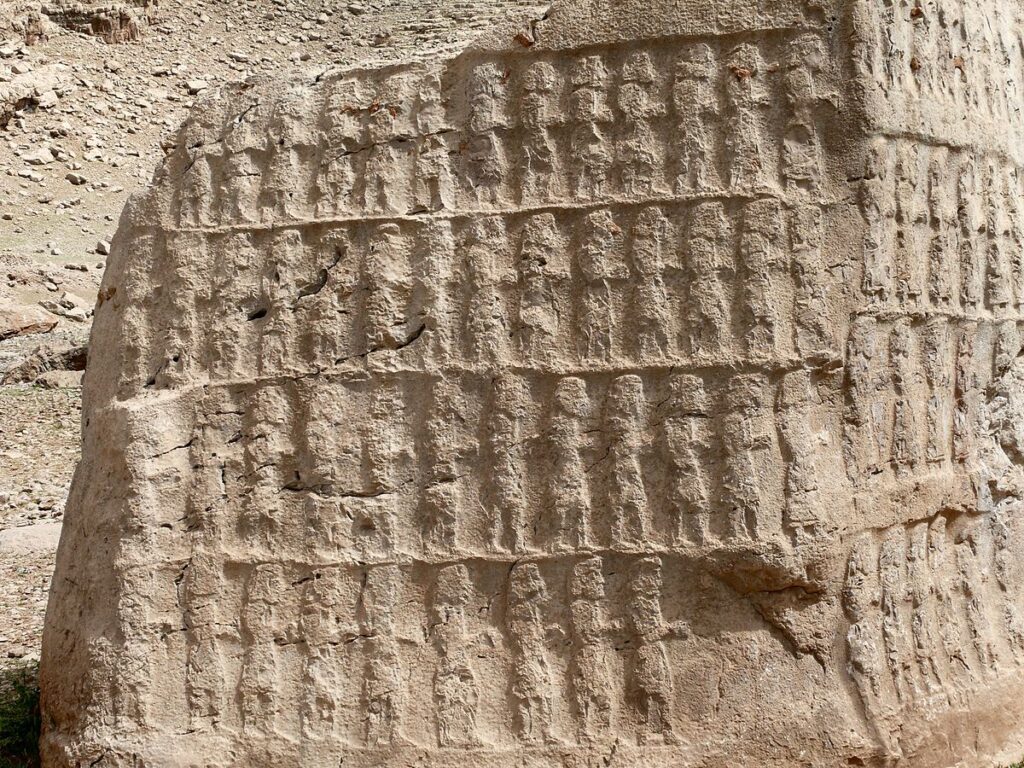
One of the hallmarks of Lur culture is its colorful festivals and celebrations, which are vibrant expressions of community spirit and solidarity. These festivals often coincide with significant events in the agricultural calendar, marking the changing seasons and celebrating the abundance of the land. One such festival is the “Pir Shalyar” festival, celebrated by the Lurs of Kermanshah province, which honors a legendary figure known for his healing powers and wisdom. During the festival, participants gather to perform traditional dances, sing folk songs, and partake in rituals that invoke the blessings of Pir Shalyar for health and prosperity.
Music and Dance
Music and dance play a central role in Lur culture, serving as expressions of joy, sorrow, and community bonding. Traditional Lur music is characterized by haunting melodies, rhythmic percussion, and soulful vocals that reflect the natural beauty and rugged landscapes of western Iran. Instruments such as the “sorna” (a type of double-reed wind instrument) and the “dohol” (a large drum) are commonly used in Lur music, adding depth and texture to the sound. Lur dances are lively and energetic, with intricate footwork and graceful movements that captivate audiences and evoke a sense of shared heritage and tradition.
Cuisine
Lur cuisine is another integral aspect of their cultural identity, reflecting the region’s rich agricultural heritage and culinary traditions. Staple ingredients such as rice, wheat, lamb, and dairy products form the basis of Lur cuisine, which is characterized by hearty stews, savory kebabs, and fragrant rice dishes. One iconic Lur dish is “kale pache,” a hearty soup made from sheep’s head and feet, seasoned with aromatic herbs and spices. Other popular dishes include “ash-e reshteh” (a thick noodle soup), “kabab koobideh” (minced meat kebabs), and “dizi” (a stew made with meat, beans, and vegetables).
Craftsmanship
The Lur people are renowned for their craftsmanship and artistic skills, which are evident in their traditional handicrafts and artisanal products. Luristan, the heartland of Lur territory, is famous for its exquisite metalwork, including bronze artifacts such as bowls, daggers, and horse trappings that date back to antiquity. The intricate designs and fine craftsmanship of these artifacts reflect the artistic prowess and technical mastery of Lur artisans, who continue to uphold this ancient tradition to this day. Additionally, Lur women are skilled in textile production, weaving colorful carpets, rugs, and textiles that showcase their creativity and cultural heritage.
Language and Literature
The Lur language, known as Luri, is a vital part of Lur culture, serving as a vehicle for storytelling, poetry, and oral traditions. Luri literature encompasses a rich and diverse range of genres, including epic poetry, folk tales, and love songs that celebrate the beauty of the land and the resilience of the Lur people. Many of these literary works have been passed down orally from generation to generation, preserving the collective memory and cultural heritage of the Lur people.
The culture of the Lur people is a testament to their resilience, creativity, and enduring spirit. Through their vibrant festivals, music, cuisine, craftsmanship, and language, the Lurs continue to celebrate their rich cultural heritage and uphold their traditions in the face of modernization and change. Their cultural legacy serves as a source of pride and inspiration, connecting them to their ancestors and uniting them as a community bound by shared values and traditions.
Religion: Exploring Spiritual Beliefs
Religion holds a significant place in the lives of the Lur people, shaping their worldview, values, and social practices. While the majority of Lurs adhere to Islam, particularly the Shia denomination, their religious practices are often intertwined with pre-Islamic beliefs and traditions, reflecting a syncretic approach to spirituality that blends elements of ancient and contemporary faiths.
In Luristan, the heartland of Lur territory, traces of ancient religious practices can still be found, attesting to the region’s rich spiritual heritage. Before the advent of Islam, the Lurs practiced various forms of animism, shamanism, and nature worship, venerating deities associated with the natural world, celestial bodies, and ancestral spirits. Sacred sites such as mountain peaks, rivers, and groves were revered as dwelling places of divine beings, where rituals and offerings were made to ensure fertility, protection, and prosperity for the community.
With the spread of Islam in the region, many Lurs embraced the new faith, incorporating Islamic beliefs and practices into their existing religious framework. However, elements of pre-Islamic spirituality persisted, blending seamlessly with Islamic rituals and observances to create a unique syncretic religious tradition.
Today, Islam serves as the predominant religion among the Lur people, providing a framework for spiritual guidance, moral values, and communal solidarity. Mosques, madrasas, and religious centers serve as focal points for worship and community gatherings, where Lurs come together to pray, recite the Quran, and engage in religious rituals.
Despite their adherence to Islam, many Lurs continue to observe pre-Islamic customs and rituals, particularly in rural areas where ancient traditions remain deeply ingrained in daily life. Festivals such as “Sadeh,” an ancient Persian festival celebrating the winter solstice, and “Nowruz,” the Iranian New Year, are still celebrated by Lurs with enthusiasm and reverence, blending Islamic and pre-Islamic elements in a colorful tapestry of cultural expression.
Moreover, Sufism, the mystical tradition of Islam, has a strong presence among the Lur people, with many individuals and communities following Sufi orders and spiritual practices. Sufism emphasizes the inner dimensions of Islam, including love, compassion, and spiritual enlightenment, and has historically played a central role in shaping the spiritual landscape of Iran.
The religious beliefs and practices of the Lur people are a reflection of their complex history, cultural heritage, and spiritual resilience. While Islam serves as the dominant faith, Lurs continue to draw inspiration from ancient traditions and mystical teachings, creating a dynamic religious tapestry that reflects the diversity and syncretism of Iranian spirituality.
Language: Preserving Linguistic Heritage
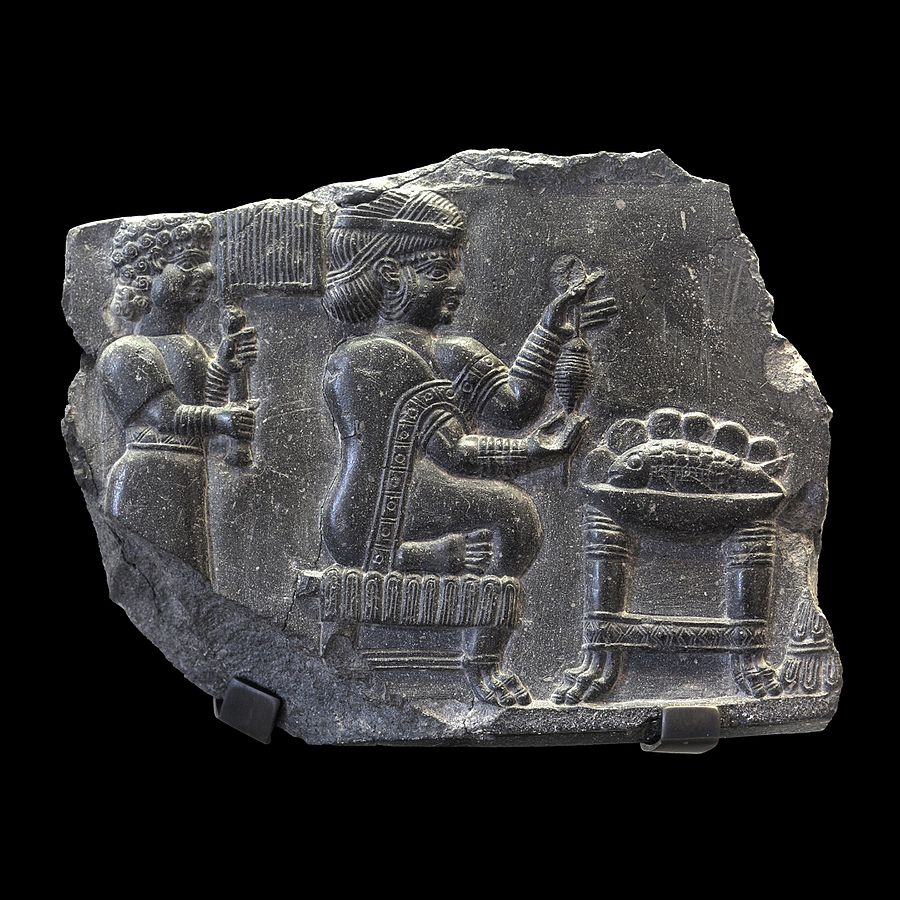
The preservation of linguistic heritage is a cornerstone of Lur culture, as the Lur people take great pride in their language, Luri, which serves as a symbol of their identity and cultural heritage. Luri is a Northwestern Iranian language with several distinct dialects, each reflecting the unique regional variations and historical influences of the Lur territories.
Luri is an ancient language with roots that trace back to the Indo-European family of languages. Over centuries of interaction with neighboring peoples and cultures, including Persians, Kurds, and Arabs, Luri has evolved and adapted, absorbing vocabulary, grammatical structures, and phonetic elements from various linguistic sources while retaining its distinct identity.
Despite the challenges of modernization and globalization, the Lur people remain committed to preserving their linguistic heritage, passing down the Luri language from generation to generation through oral traditions, storytelling, and informal education within families and communities. Elders play a vital role in this process, serving as custodians of linguistic knowledge and cultural wisdom, imparting the intricacies of the Luri language to younger generations through conversation, folk tales, and songs.
In recent years, efforts have been made to promote the study and preservation of Luri language and culture through formal education programs, language revitalization initiatives, and literary endeavors. Schools and educational institutions in Lur-majority areas offer classes in Luri language and literature, providing students with opportunities to learn about their linguistic heritage and develop proficiency in their mother tongue.
Furthermore, cultural organizations, publishing houses, and media outlets have emerged to promote Lur language and literature, producing books, newspapers, magazines, and digital content in Luri and organizing cultural events, literary festivals, and language workshops to celebrate and showcase the richness of Lur culture.
In addition to formal efforts, everyday interactions and cultural practices also contribute to the preservation of the Luri language. Daily conversations, greetings, proverbs, and expressions in Luri are integral parts of social interaction among Lurs, reinforcing the importance of language as a vehicle for communication, identity, and cultural expression.
Overall, the preservation of the Luri language is a testament to the resilience, pride, and cultural vitality of the Lur people. By safeguarding their linguistic heritage, Lurs ensure that future generations will continue to cherish and celebrate the rich tapestry of their cultural identity for years to come.
Identity: Navigating Modernity and Tradition
Navigating the complexities of modernity while preserving traditional customs and values is a delicate balancing act for the Lur people. As the forces of globalization, urbanization, and technological advancement continue to shape the world around them, Lurs find themselves at the crossroads of tradition and modernity, grappling with the challenges of maintaining their cultural identity in an ever-changing society.
In the face of rapid social and economic transformations, many Lurs strive to hold onto their traditional way of life, which is deeply rooted in close-knit community bonds, reverence for nature, and respect for ancestral customs. However, the pressures of modernity, including urban migration, access to education, and exposure to global media, have brought about profound changes in Lur society, leading to shifts in values, lifestyles, and aspirations.
One of the key challenges facing the Lur community is the preservation of traditional occupations and livelihoods in the face of economic modernization and industrialization. Historically, Lurs have been renowned for their expertise in agriculture, animal husbandry, and handicrafts, which have sustained their communities for generations. However, with the rise of mechanized farming, urbanization, and the decline of traditional industries, many Lurs are forced to seek alternative sources of income and employment outside their traditional occupations.
Despite these challenges, efforts are underway to revitalize traditional industries and promote sustainable practices that align with Lur cultural values and environmental stewardship. Initiatives such as organic farming, eco-tourism, and artisanal craftsmanship are gaining traction among Lur communities, offering opportunities for cultural preservation, economic empowerment, and environmental conservation.
Education also plays a crucial role in shaping the identity and aspirations of Lur youth, many of whom are torn between the desire to uphold their cultural heritage and the pursuit of modern opportunities and lifestyles. While access to education has expanded in recent years, there is a growing awareness of the importance of integrating traditional knowledge and values into the educational curriculum, ensuring that future generations of Lurs remain connected to their roots while embracing the opportunities of the modern world.
In addition to economic and educational challenges, the Lur community also faces social and cultural pressures associated with acculturation, migration, and social change. As Lurs migrate to urban centers in search of better opportunities, they often encounter cultural assimilation and alienation, leading to feelings of displacement and loss of identity. However, urbanization also presents opportunities for cultural exchange, networking, and community building, as Lurs come together to celebrate their shared heritage and support one another in navigating the complexities of modern urban life.
Ultimately, the journey of navigating modernity and tradition is a dynamic and ongoing process for the Lur people, as they seek to find a balance between preserving their cultural heritage and adapting to the realities of the modern world. By embracing innovation while honoring their ancestral customs and values, Lurs are forging a path forward that celebrates the richness and diversity of their cultural identity in an ever-changing society.
Embracing Diversity and Resilience
The Lurs represent a vibrant and dynamic facet of Iranian culture and heritage, enriched by centuries of history, tradition, and resilience. Their contributions to Iranian civilization, from literature and music to cuisine and craftsmanship, are a testament to the enduring strength of cultural diversity and the power of community in the face of change. As the Lurs continue to navigate the complexities of the modern world, their legacy serves as a source of inspiration and pride, reminding us of the richness and vitality of Iran’s cultural mosaic.

